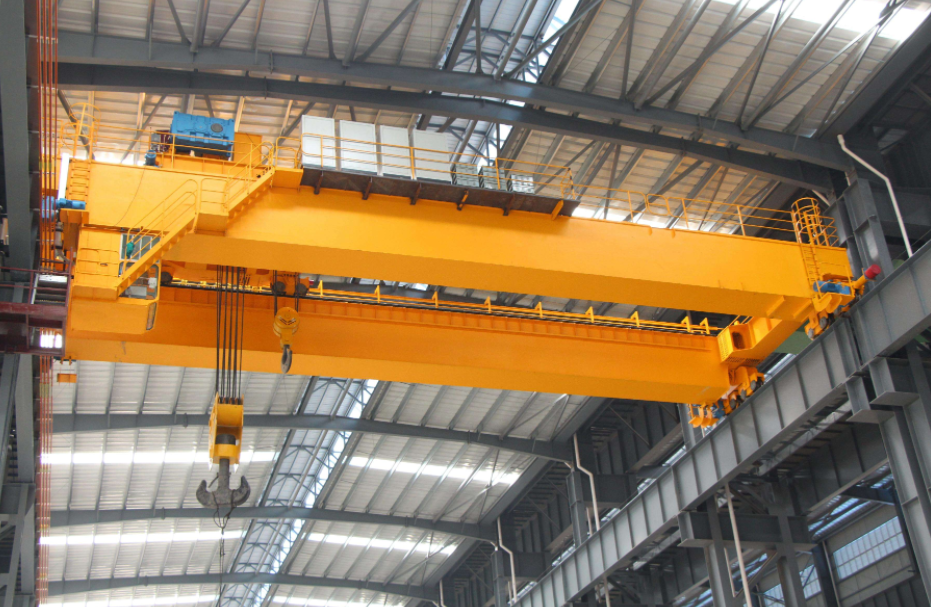Understanding Load Capacities in 30 Ton Bridge Cranes
- blog@ellsenbridgecrane.com
- Aug 15, 2024
- 4 min read
Bridge cranes are essential components in various industrial settings, providing the heavy lifting power required to move materials, equipment, and products across large areas. One of the most commonly used types is the 30-ton bridge crane, known for its balance between strength and versatility. Understanding the load capacities of these cranes is crucial for ensuring safe, efficient operations and maximizing the crane's lifespan. This article delves into the key aspects of load capacities in 30-ton bridge cranes, exploring their significance, how they are determined, and the factors influencing these capacities.

What is Bridge Crane Load Capacity?
The load capacity of a bridge crane refers to the maximum weight that the crane can safely lift and transport. For a 30 ton bridge crane, this means it can handle loads up to 30 tons (approximately 27,216 kilograms). However, it's important to note that this capacity is not a fixed number; it is influenced by various factors, including the crane's design, configuration, and operating conditions.
Determining Load Capacities
The load capacity of a bridge crane is determined during the design and engineering phase. Engineers consider multiple factors to ensure that the crane can handle its intended loads safely. These factors include:
Crane Type: There are different types of bridge cranes, such as single girder, double girder, and gantry cranes. The type of crane significantly affects its load capacity. For example, double girder cranes are generally stronger and can support heavier loads than single girder cranes.
Structural Components: The materials used in the crane's construction, including the girders, end trucks, and hoists, play a crucial role in determining the load capacity. High-strength steel and other durable materials can increase a crane's load-bearing ability.
Span Length: The span of the crane—the distance between the two end trucks—also affects its load capacity. A longer span may require additional reinforcement or a different design approach to maintain the desired load capacity.
Hoist Mechanism: The hoist is the component that lifts and lowers the load. The hoist's design, including the motor power, drum size, and rope or chain specifications, is critical in determining the crane's overall load capacity.
Safety Factors: Engineers incorporate safety factors into the design to account for unexpected stresses or variations in material properties. This ensures that the Aicrane overhead crane can handle slightly more than its rated capacity without risking failure.
Operating Environment: The environment in which the crane operates can also influence its load capacity. Factors such as temperature, humidity, and exposure to corrosive substances can impact the materials' strength and durability, potentially reducing the crane's effective load capacity.
Importance of Load Capacity in Crane Operations
Understanding and adhering to the load capacity of a 30-ton bridge crane is vital for several reasons:
Safety: Overloading a crane beyond its rated capacity is one of the leading causes of crane accidents. Such incidents can result in catastrophic equipment failure, leading to injuries, fatalities, and significant property damage. By staying within the specified load capacity, operators can minimize the risk of accidents.
Equipment Longevity: Regularly operating a crane at or near its maximum load capacity can lead to accelerated wear and tear. This can shorten the crane's lifespan, increasing maintenance costs and leading to more frequent replacements. Properly managing load capacities helps ensure the crane remains in good working condition for as long as possible.
Operational Efficiency: Understanding the load capacity allows operators to plan lifts more effectively. By knowing the limits, they can optimize crane operations, reducing the time needed for each lift and minimizing the need for adjustments or secondary lifts.
Compliance: Adhering to the load capacity is also a matter of regulatory compliance. Occupational safety and health regulations often include strict guidelines on crane operations, including load capacities. Failing to comply with these regulations can result in legal penalties, fines, and increased scrutiny from regulatory bodies.
Factors That Can Affect Load Capacity in Practice
While the rated load capacity provides a guideline, several factors can influence the actual load capacity during crane operations:
Load Distribution: The manner in which the load is distributed on the hook or lifting mechanism can affect the crane's ability to lift safely. An unevenly distributed load can create imbalances, leading to potential overloading of one side of the crane.
Dynamic Loads: Dynamic forces, such as those caused by sudden starts, stops, or swinging loads, can increase the effective load on the crane beyond its static load capacity. Operators must account for these forces to avoid overloading.
Wind and Weather Conditions: In outdoor operations, wind can exert additional forces on the crane and the load, reducing the crane's effective load capacity. Extreme weather conditions, such as ice or snow accumulation, can also add weight to the load or the crane components.
Load Attachments and Rigging: The weight of any additional attachments, such as spreader bars, lifting beams, or specialized rigging, must be included in the total load calculation. Failure to account for these can inadvertently exceed the crane's load capacity.
Wear and Deterioration: Over time, components of the crane may experience wear and deterioration, which can reduce the crane's load capacity. Regular inspections and maintenance are crucial to ensure that the crane continues to operate within safe limits.
Conclusion
Understanding the load capacities of 30-ton bridge cranes is essential for safe and efficient operations. By considering the design factors, operating conditions, and potential influences on load capacity, operators can make informed decisions that enhance safety, extend equipment lifespan, and ensure compliance with regulations. Proper training and adherence to best practices are key to maximizing the benefits of a 30-ton bridge crane while minimizing risks. As technology continues to advance, innovations in crane design and automation may further improve our ability to manage and optimize load capacities, leading to even safer and more efficient material handling solutions.








Comments